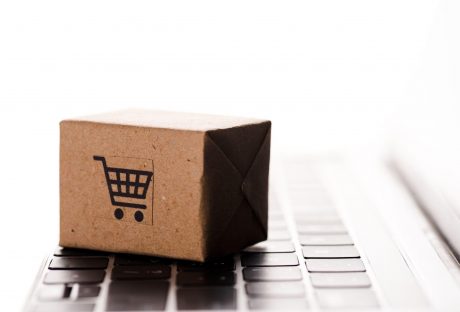In today’s hyper-connected world, consumers are constantly bombarded with advertisements across multiple channels. To effectively engage your target audience, it’s essential to adopt a multi-channel marketing strategy that integrates various touchpoints.
One channel that should not be overlooked in this approach is digital out-of-home (DOOH) advertising. With its unique ability to captivate consumers in public spaces, DOOH offers several compelling reasons why it should be an integral part of your multi-channel marketing strategy.
Extended Reach and Increased Visibility:
DOOH advertising provides an opportunity to expand your brand’s reach beyond the confines of online and traditional media. By leveraging strategically placed digital displays in high-traffic areas such as shopping malls, airports, and transit stations, you can expose your brand to a larger audience.
Unlike other advertising channels that are limited to specific devices or platforms, DOOH has the advantage of reaching consumers when they are outside their homes, making it an effective way to generate brand awareness and increase visibility.
According to a study conducted by Nielsen, DOOH advertising has the potential to reach 90% of the population in some markets (1). By including DOOH in your multi-channel marketing strategy, you can tap into this vast audience and ensure that your brand message reaches a diverse range of consumers.
Targeted and Contextual Messaging:
DOOH advertising allows for highly targeted and contextual messaging, enabling you to deliver relevant content to specific audiences. DOOH networks often provide advanced targeting capabilities based on factors such as location, time of day, and audience demographics. This level of granularity allows you to tailor your messaging to resonate with the specific audience present at a given location, enhancing the relevance and effectiveness of your campaigns.
For example, a sports apparel brand can display ads promoting its latest collection near gyms or sports facilities, targeting fitness enthusiasts. Similarly, a cosmetics brand can showcase its products in high-end shopping districts to attract its desired demographic. By leveraging the targeting capabilities of DOOH, you can ensure that your message reaches the right people at the right time and place.
Seamless Integration with Digital Channels:

DOOH advertising seamlessly complements your digital marketing efforts by bridging the gap between offline and online channels. With the rise of technologies like near-field communication (NFC), QR codes, and mobile integrations, DOOH campaigns can drive engagement by encouraging consumers to interact with your brand through their smartphones.
For instance, a DOOH ad can display a QR code that leads consumers to a landing page or a mobile app where they can learn more about the product, make a purchase, or participate in a contest. By integrating DOOH with digital channels, you create a cohesive brand experience and increase the chances of converting offline interactions into online actions, ultimately driving customer engagement and conversions.
Enhanced Creativity and Engagement:
DOOH advertising offers unparalleled opportunities for creativity and audience engagement. With dynamic digital displays, you can deliver captivating and visually appealing content that captures attention and leaves a lasting impression. The ability to incorporate motion, animation, and high-resolution visuals enables you to tell compelling stories and convey your brand’s message effectively.
Moreover, DOOH campaigns can incorporate interactive elements such as touchscreens, motion sensors, and augmented reality (AR), enabling consumers to actively engage with your brand. These interactive experiences foster deeper connections, increase brand recall, and encourage social sharing, amplifying the impact of your marketing efforts.
For example, an automotive brand can create an interactive DOOH display where passersby can virtually customize the features of a car and visualize it in real time. This hands-on experience not only generates excitement but also allows potential customers to interact with the brand in a memorable and engaging way.
Measurable and Data-Driven Insights:
Like other digital channels, DOOH advertising provides valuable data and insights that can inform your marketing strategies. Metrics such as impressions, dwell time, and interactions can be tracked and analyzed to gauge the effectiveness of your campaigns. By leveraging these insights, you can optimize your DOOH messaging, make data-driven decisions, and allocate resources more effectively.
In addition to these basic metrics, DOOH can leverage advanced technologies for even more granular data. For instance, facial recognition technology can provide demographic information about the audience, allowing you to gauge the composition and characteristics of the viewers. This data-driven approach helps you understand your audience better, refine your targeting, and tailor your messaging to maximize engagement and conversions.
Unique Brand Experiences:
DOOH allows you to create unique and memorable brand experiences that are difficult to replicate through other channels. Whether it’s a large-scale projection, a digital billboard takeover, or a stunning interactive display, DOOH enables you to captivate audiences and differentiate your brand from competitors. By providing immersive and innovative experiences, you can create a strong emotional connection with consumers, ultimately driving brand loyalty and advocacy.
For example, a fashion brand can collaborate with an artist to create a mesmerizing digital art installation that showcases their latest collection. This visually striking display not only attracts attention but also associates the brand with creativity and innovation, leaving a lasting impression on viewers.
In conclusion, digital out-of-home advertising should be an integral component of your multi-channel marketing strategy. By incorporating DOOH into your overall marketing mix, you can expand your brand’s reach, deliver targeted messaging, seamlessly integrate with digital channels, foster engagement, gather valuable data, and create unique brand experiences.
By leveraging the power of DOOH alongside other marketing channels, you can maximize the impact of your campaigns and effectively engage with your target audience in both offline and online environments.
Read Also:






















